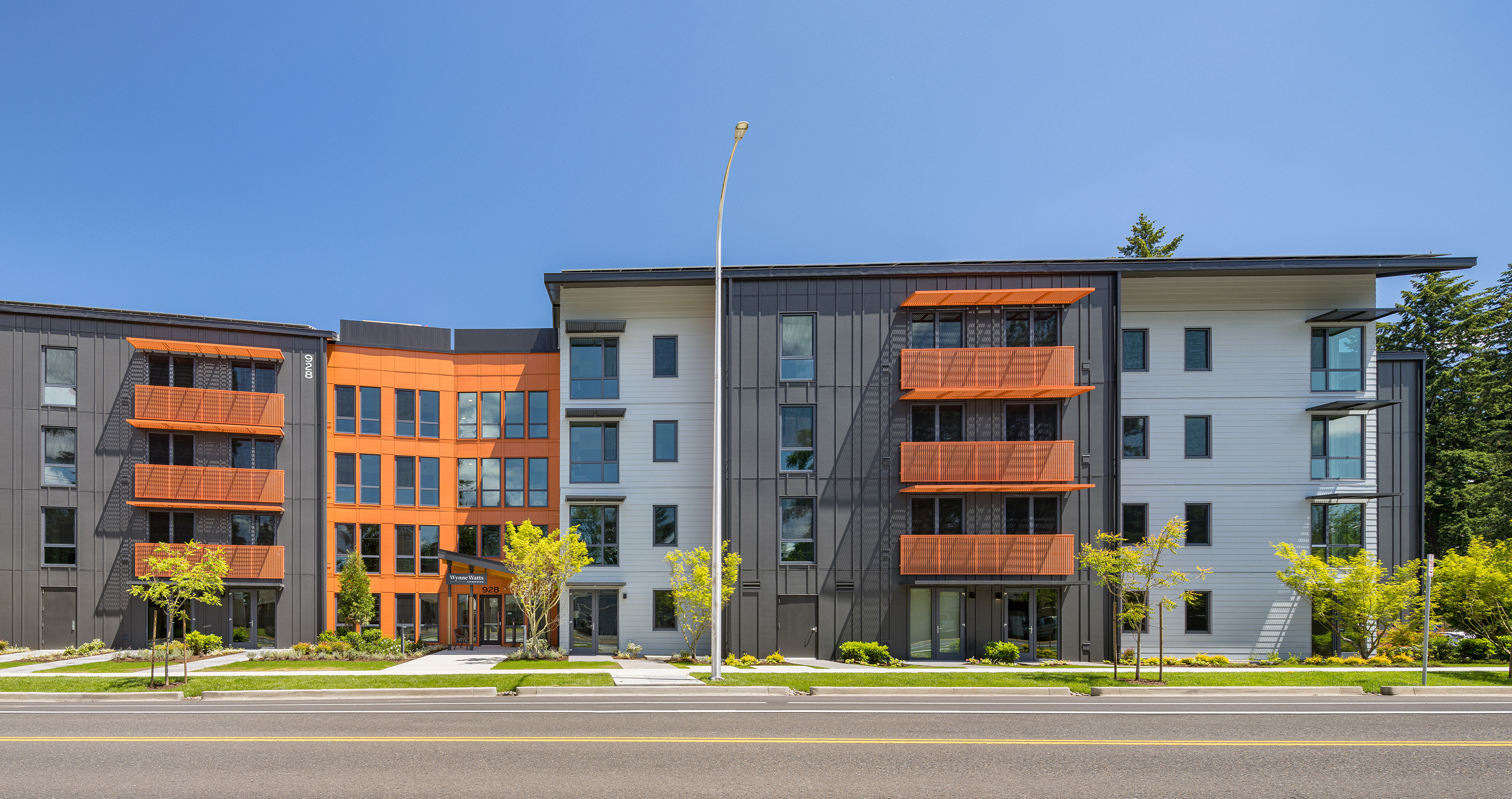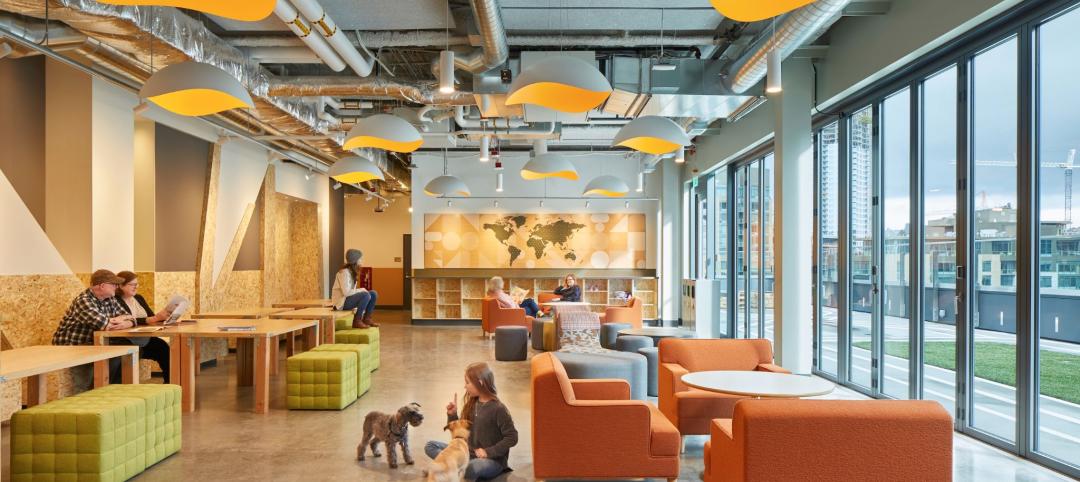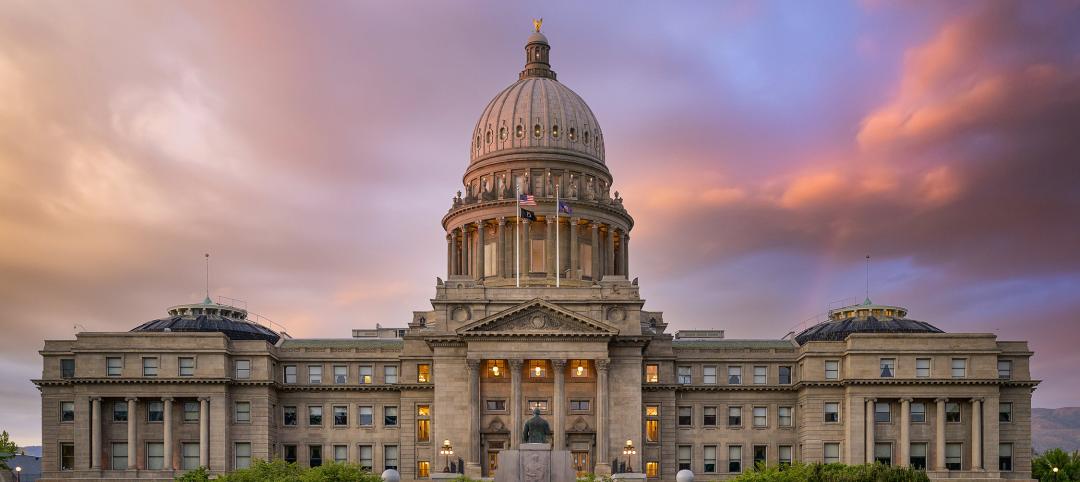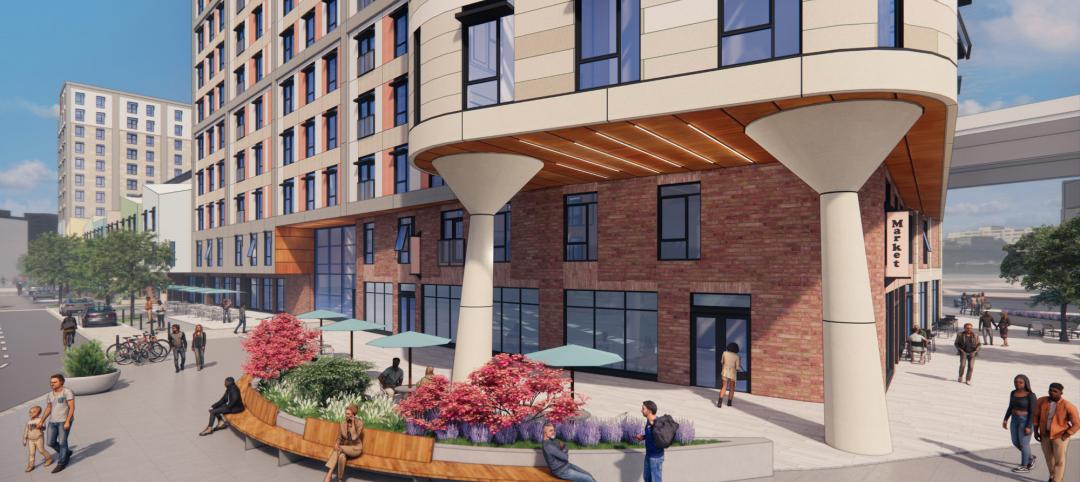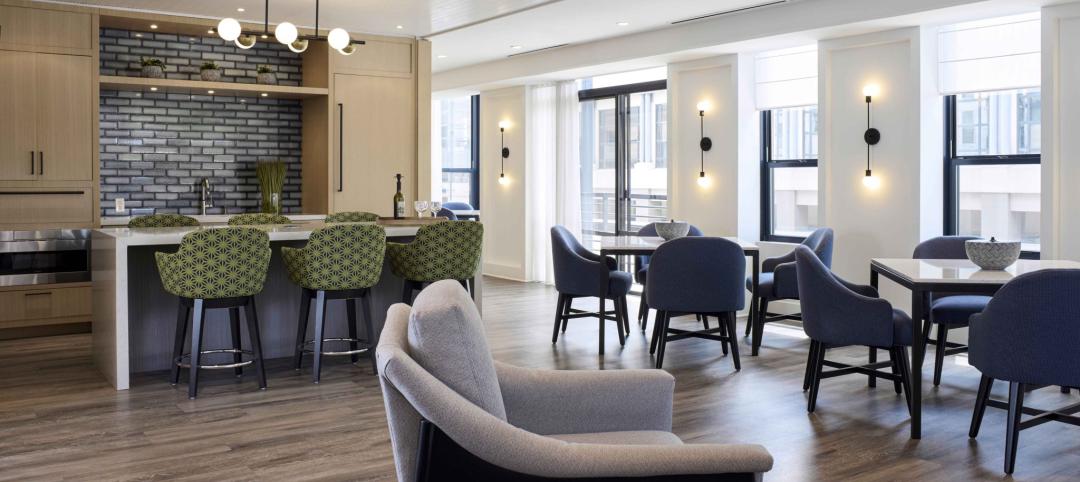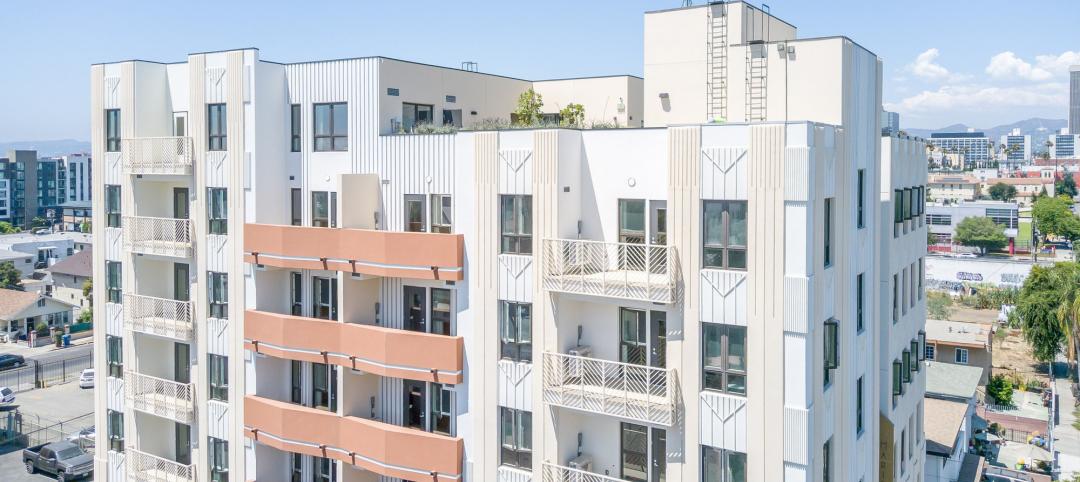In our latest call for entries, Building Design+Construction collected over 20 multifamily projects with a focus on affordable housing. Here are two developments that are PHIUS-certified and built to Passive House standards, and one sustainable project powered entirely by PV solar.
This article is part of BD+C’s 2023 affordable multifamily project roundup. While this article focuses on sustainable developments, other categories include supportive/specialized housing, mixed-use communities, and more. The entire list of projects can be found here.
Fifth & Dinwiddie West
Pittsburgh, Pa.
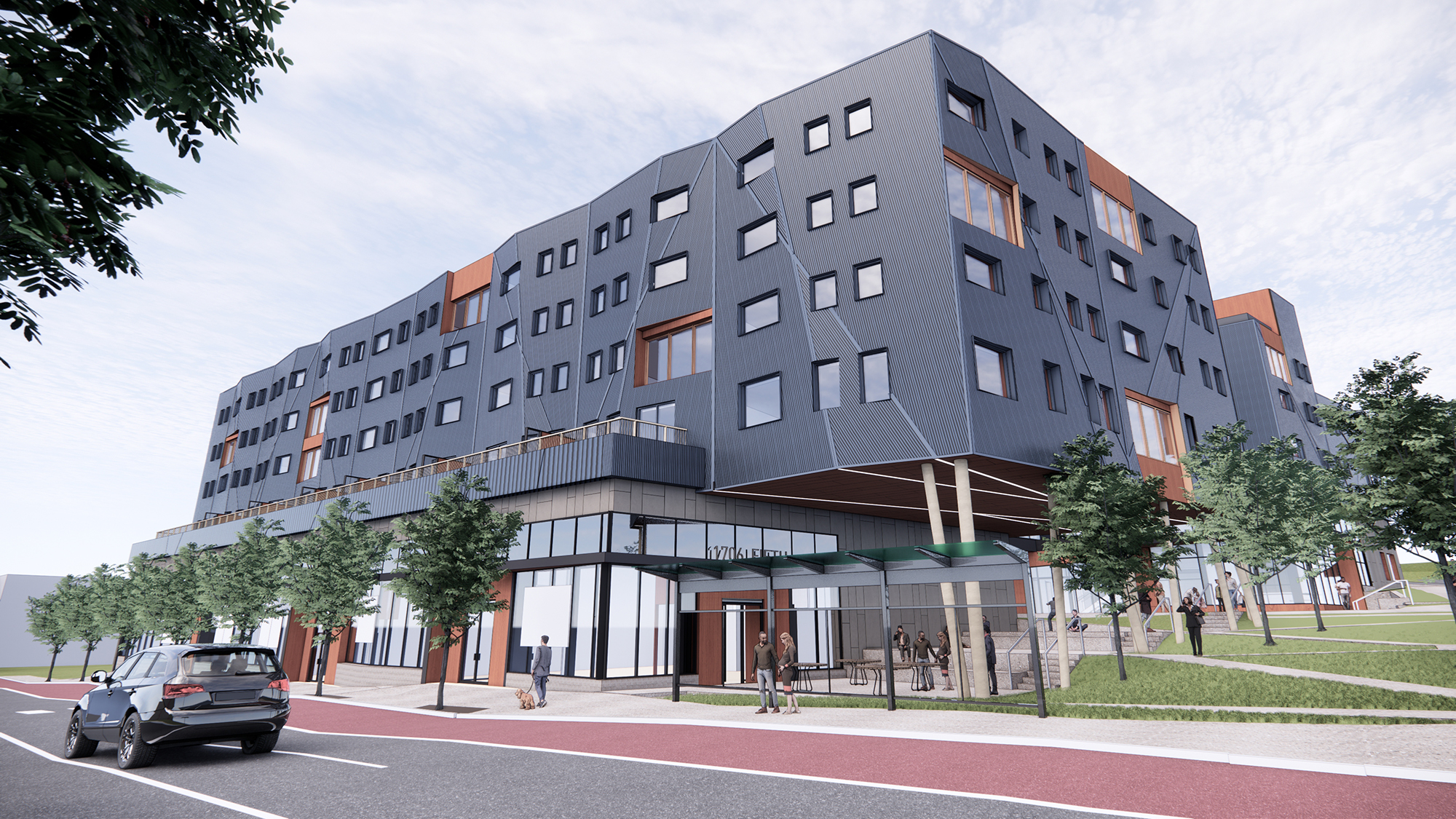
Fifth & Dinwiddie West is slated to be a 190,000-sf mixed-use, mixed-income development in Pittsburgh, Pa. The project is notable for its Passive House design, and is already pre-certified PHIUS. The building’s location and form—two stacks of housing, joined by a pedestrian bridge—create community and transportation hubs. Located next to a Bus Rapid Transit Station, it connects residents to jobs in Downtown and Oakland, Pittsburgh’s two biggest employment centers.
Rather than mimicking its historic context, 5th & Dinwiddie West’s folded façade creates a contemporary contrast that enhances its surroundings. At the same time, the building pays homage to its community with public art celebrating the neighborhood’s rich history of musicians, photographers, and artists.
The building team anticipates a 70% reduction in energy use due to its Passive House design—passing its financial savings to the residents. Twenty percent of the units will be committed to be affordable housing, targeting three levels of income: 2.5% of the units will be for households making at or below 20% of the area’s median income (AMI), 7.5% of the units will be for households at or below 50% AMI, and another 10% of the units will be for households at or below 60% AMI with the intention of creating an integrated neighborhood community within the building.
On the Building Team:
Developer/Owner: Bridging the Gap Development
General Contractor: Rycon
Architect: GBBN Architects
Passive House Consultant: Auros Group
MEP/Civil/Structural Engineer: MBI (Michael Baker International)
Landscape Architect: evolveEA
Offsite Panel System Fabrication: Blueprint Robotics

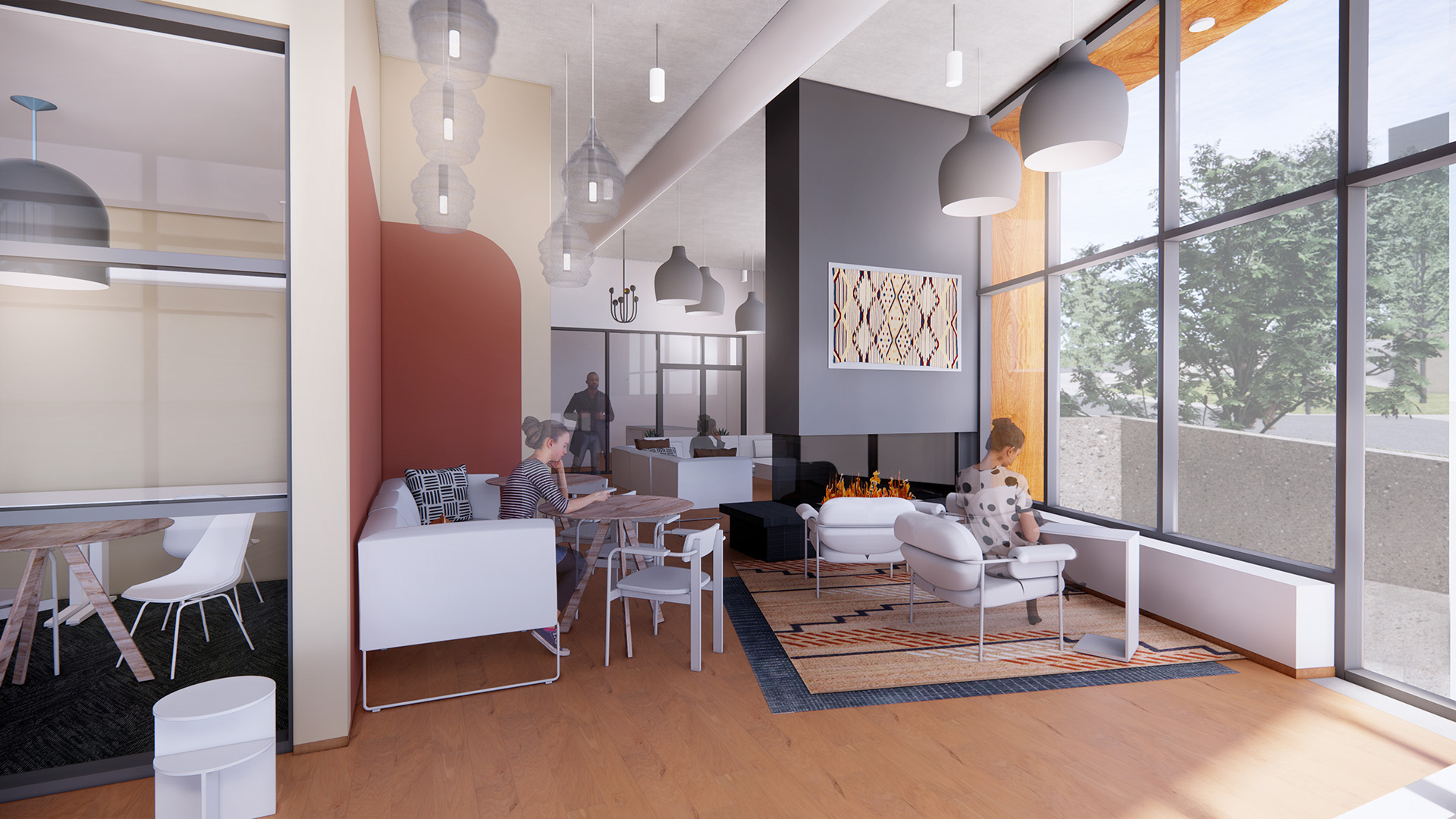
425 Grand Concourse
Bronx, N.Y.
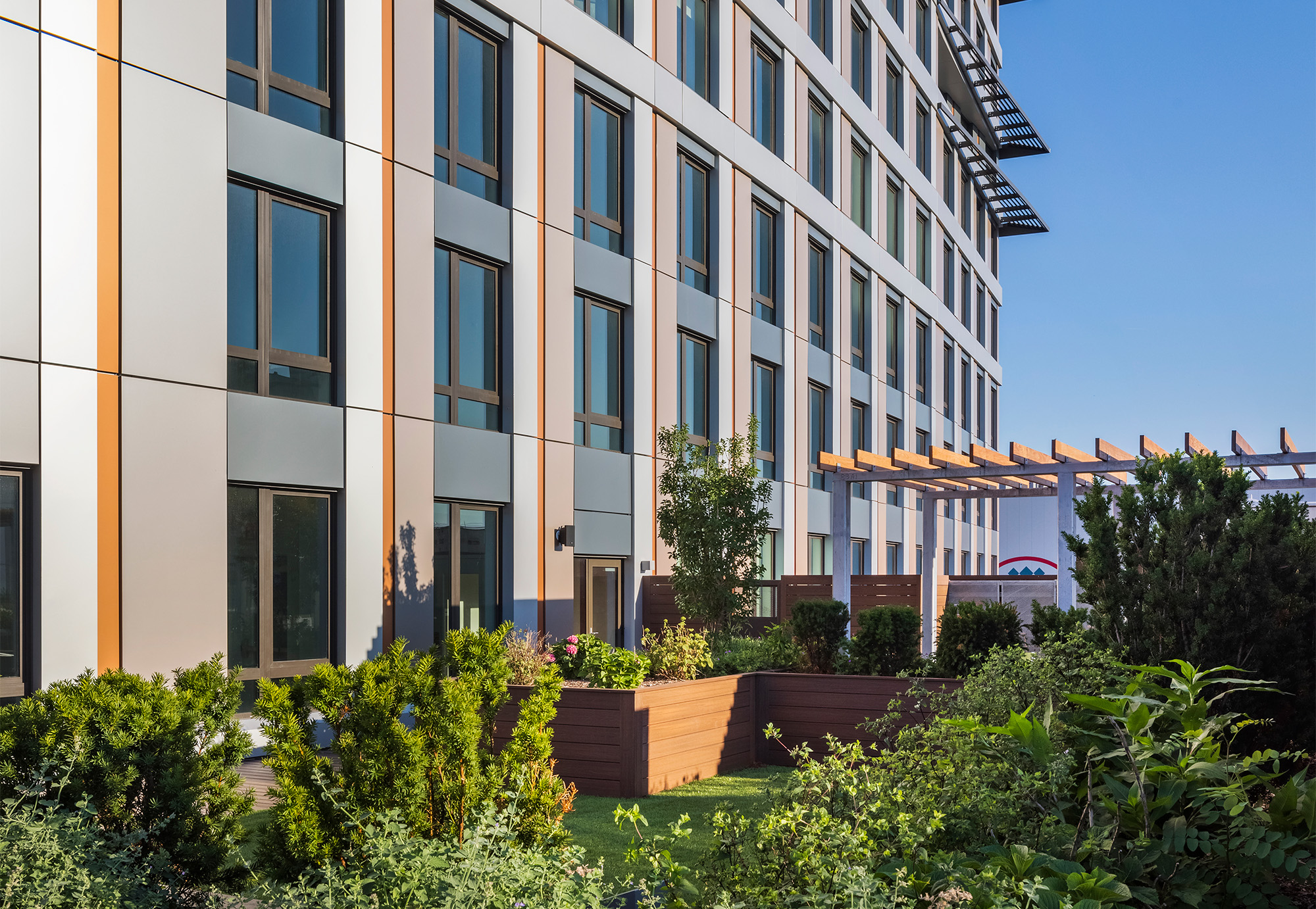
425 Grand Concourse, located in the Bronx, N.Y., is the largest Passive House project in North America to date. At 300,000 sf, Grand Concourse contains 277 affordable housing units (on an income tier basis), a medical facility, supermarket, community support space, and a new student services center for CUNY Hostos, the public community college.
The mixed-use development includes approximately 1,000 REHAU uPVC windows designed to meet PHIUS thermal goals. Built to Passive House standards, the building will consume up to 70% less energy than conventional housing projects, according to the project team. Grand Concourse provides a model for healthy living environments in a district with one of the worst childhood asthma rates in the country (due to high air pollution from heavy traffic and nearby waste transfer stations). Its PHIUS-certified design minimizes the release of harmful, asthma-triggering combustion gasses for tenants.
The building offers residents a wide variety of amenities including a recreation room, landscaped roof terrace, a lounge space, fitness room, laundry rooms, and bike storage. An additional benefit to the tenants at 425 Grand Concourse is that as a part of the development, an online “dashboard” was designed by Bright Power so tenants can—in real-time—review their current energy consumption and compare it with the average building readings.
On the Building Team:
Developer: Trinity Financial and MBD Community Housing Corporation
General Contractor: Monadnock Construction
Architect: Dattner Architects
MEP: Dagher Engineering
Passive House Consultant: Steven Winter Associates, Inc.
Window Manufacturer: Starr Windows & Doors, Inc.
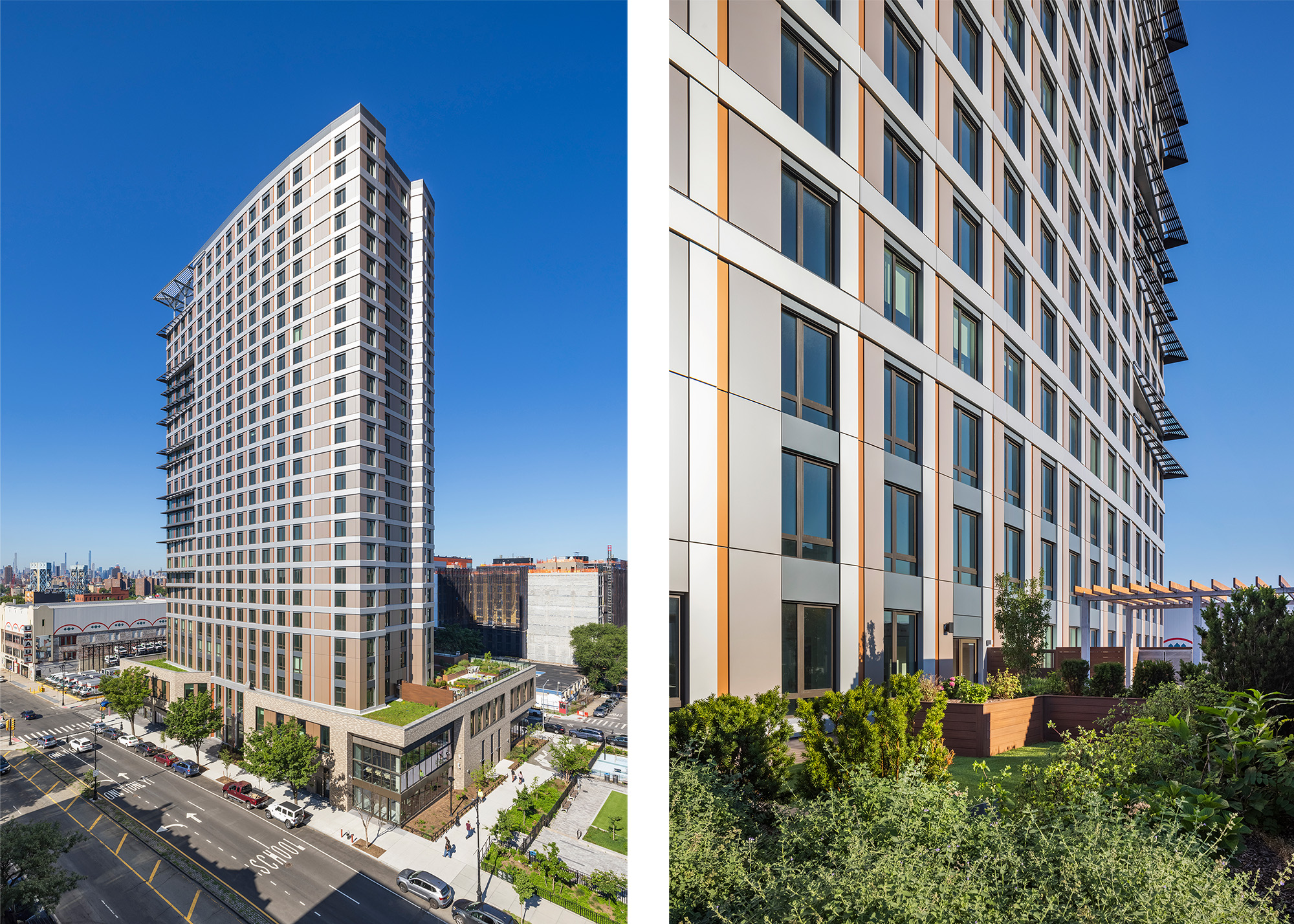
Wynne Watts Commons
Gresham, Ore.
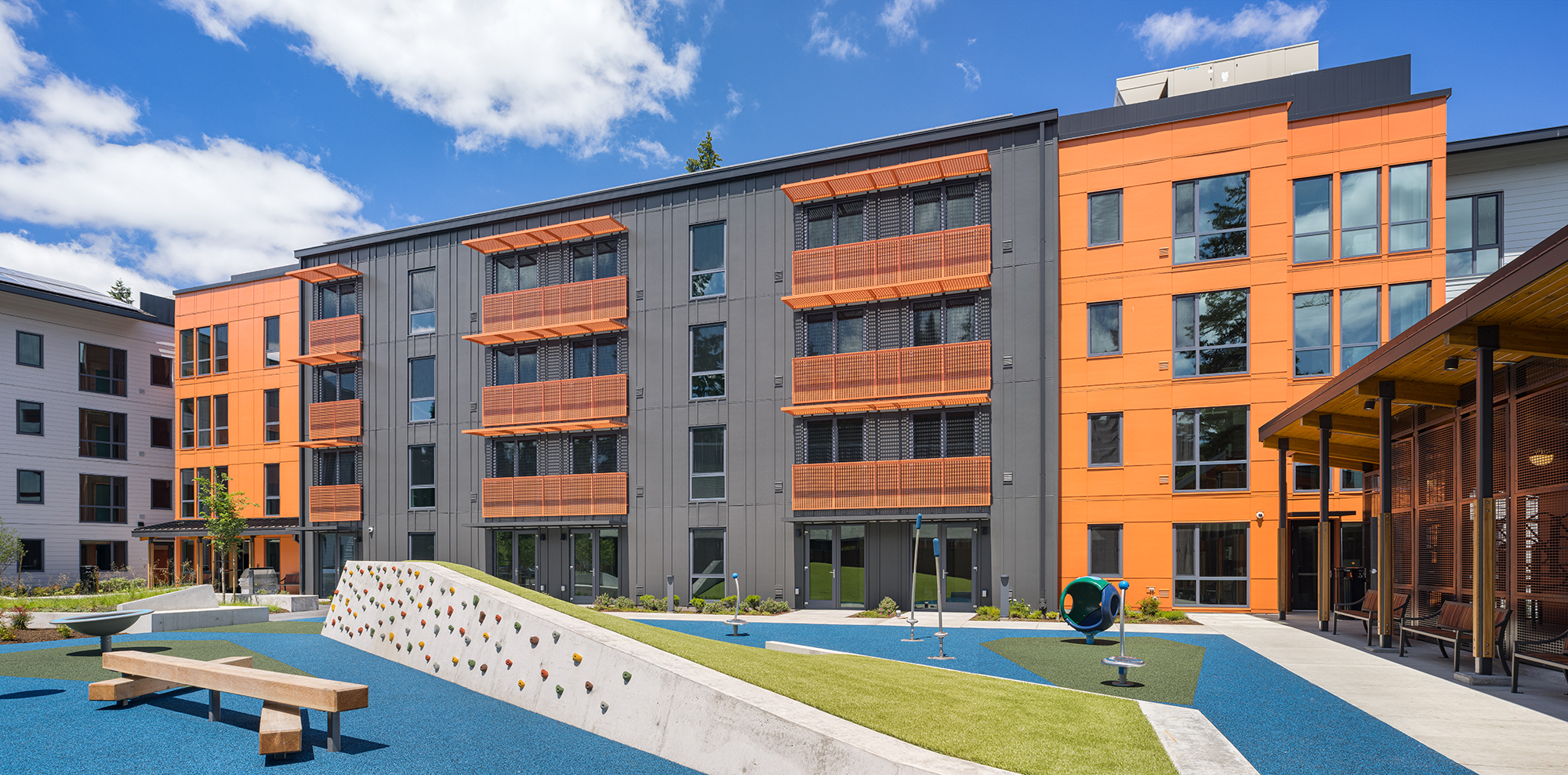
Wynne Watts Commons marries accessibility and sustainability in a 97,000-sf shell. Though it’s not a PHIUS-certified building, it’s the largest Net Zero Energy affordable housing project in the Pacific Northwest (and among only several nationwide). It’s fully powered by solar panels, which provide enough renewable energy to operate the entire building with no utility costs for residents.
The project holds a total of 150 units, including 30 universally accessible apartments for adults with intellectual and developmental disabilities (I/DD). Albertina Kerr, a mission-based nonprofit, spearheaded the creation of this community in order to serve people experiencing IDDs, mental health challenges, and other social barriers both as outpatients and residents in Kerr housing. In addition to the 30 units reserved for people making less than 30% of the area’s median income, 102 are set aside for families earning less than 60% of the AMI, and 15 units are designated for families making under 80% AMI.
Wynne Watts’ living spaces feature design modifications that increase the health and safety of its tenants. Hands-free unit elevators, entry operations, and motorized upper kitchen cabinets provide access for tenants with limited mobility, in addition to voice-control systems for lighting and blinds. More accessible specializations include pull-out stovetops, clothing shelving systems, and environmental controls that integrate adjustable color lighting.
On the Building Team:
Owner: Albertina Kerr
Developer: Edlen & Co
General Contractor: Pence Construction
Architect: Ankrom Moisan Architects
Net Zero Consultant: Green Hammer Design Build
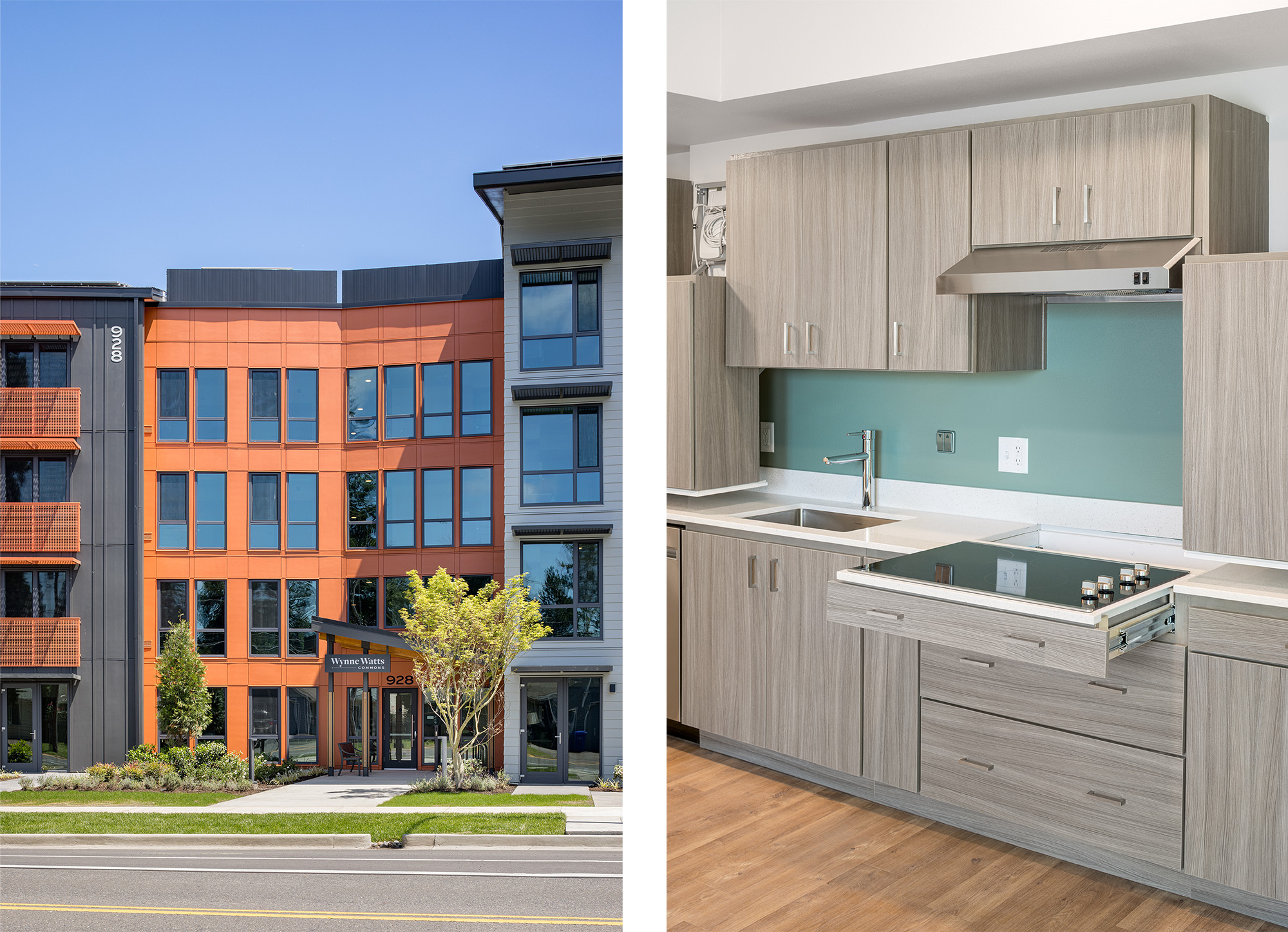
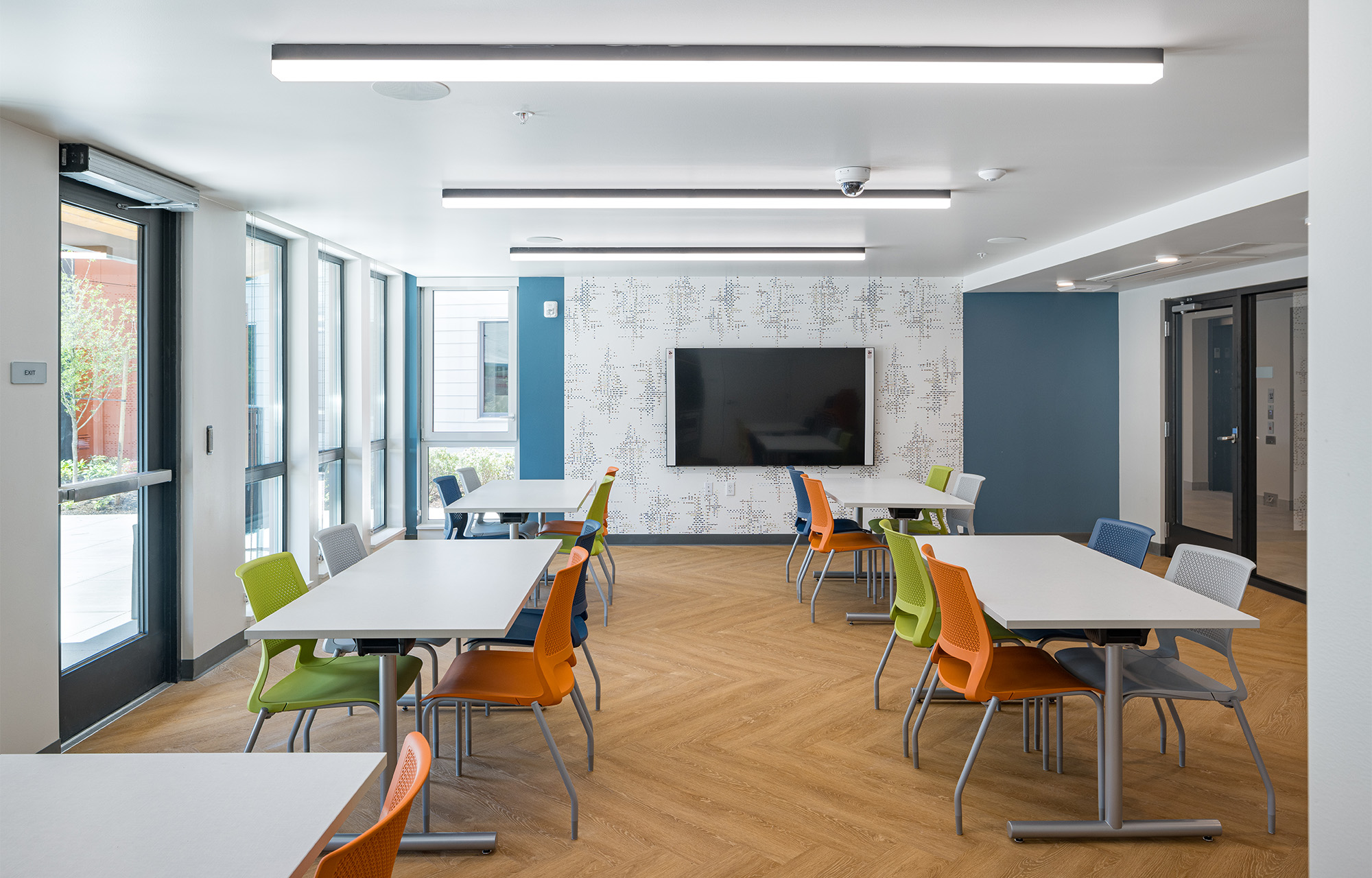
Related Stories
Office Buildings | Dec 1, 2023
Amazon office building doubles as emergency housing for Seattle families
The unusual location for services of this kind serves over 300 people per day. Mary's Place spreads across eight of the office's floors—all designed by Graphite—testing the status quo for its experimental approach to homelessness support.
Multifamily Housing | Nov 30, 2023
A lasting housing impact: Gen-Z redefines multifamily living
Nathan Casteel, Design Leader, DLR Group, details what sets an apartment community apart for younger generations.
Industry Research | Nov 28, 2023
Migration trends find top 10 states Americans are moving to
In the StorageCafe analysis of the latest migration trends, each U.S. state was looked at to see the moving patterns of people in the last few years. These are the top 10 states that people are moving to.
MFPRO+ News | Nov 21, 2023
California building electrification laws could prompt more evictions and rent increases
California laws requiring apartment owners to ditch appliances that use fossil fuels could prompt more evictions and rent increases in the state, according to a report from the nonprofit Strategic Actions for a Just Economy. The law could spur more evictions if landlords undertake major renovations to comply with the electrification rule.
MFPRO+ News | Nov 21, 2023
Underused strip malls offer great potential for conversions to residential use
Replacing moribund strip malls with multifamily housing could make a notable dent in the housing shortage and revitalize under-used properties across the country, according to a report from housing nonprofit Enterprise Community Partners.
Affordable Housing | Nov 16, 2023
Habitat receives approval for $400 million affordable housing redevelopment
Chicago-based Habitat, a leading U.S. multifamily developer and property manager, announced that its $400 million redevelopment of Marine Drive Apartments in Buffalo, N.Y., has received planned unit development (PUD) approval by the Buffalo Common Council.
Senior Living Design | Nov 7, 2023
Age-restricted affordable housing community opens in Rockville, Md.
Residences on the Lane boasts a total of 150 units, each designed to cater to various income levels for seniors aged 62 and up.
MFPRO+ New Projects | Nov 3, 2023
Los Angeles affordable housing community has grand opening
Yesterday, the grand opening took place for Mariposa Lily, a new Art Deco-inspired affordable housing project in the Pico Union district of Los Angeles, Calif.
Adaptive Reuse | Nov 1, 2023
Biden Administration reveals plan to spur more office-to-residential conversions
The Biden Administration recently announced plans to encourage more office buildings to be converted to residential use. The plan includes using federal money to lend to developers for conversion projects and selling government property that is suitable for conversions.
Sponsored | MFPRO+ Course | Oct 30, 2023
For the Multifamily Sector, Product Innovations Boost Design and Construction Success
This course covers emerging trends in exterior design and products/systems selection in the low- and mid-rise market-rate and luxury multifamily rental market. Topics include facade design, cladding material trends, fenestration trends/innovations, indoor/outdoor connection, and rooftop spaces.


